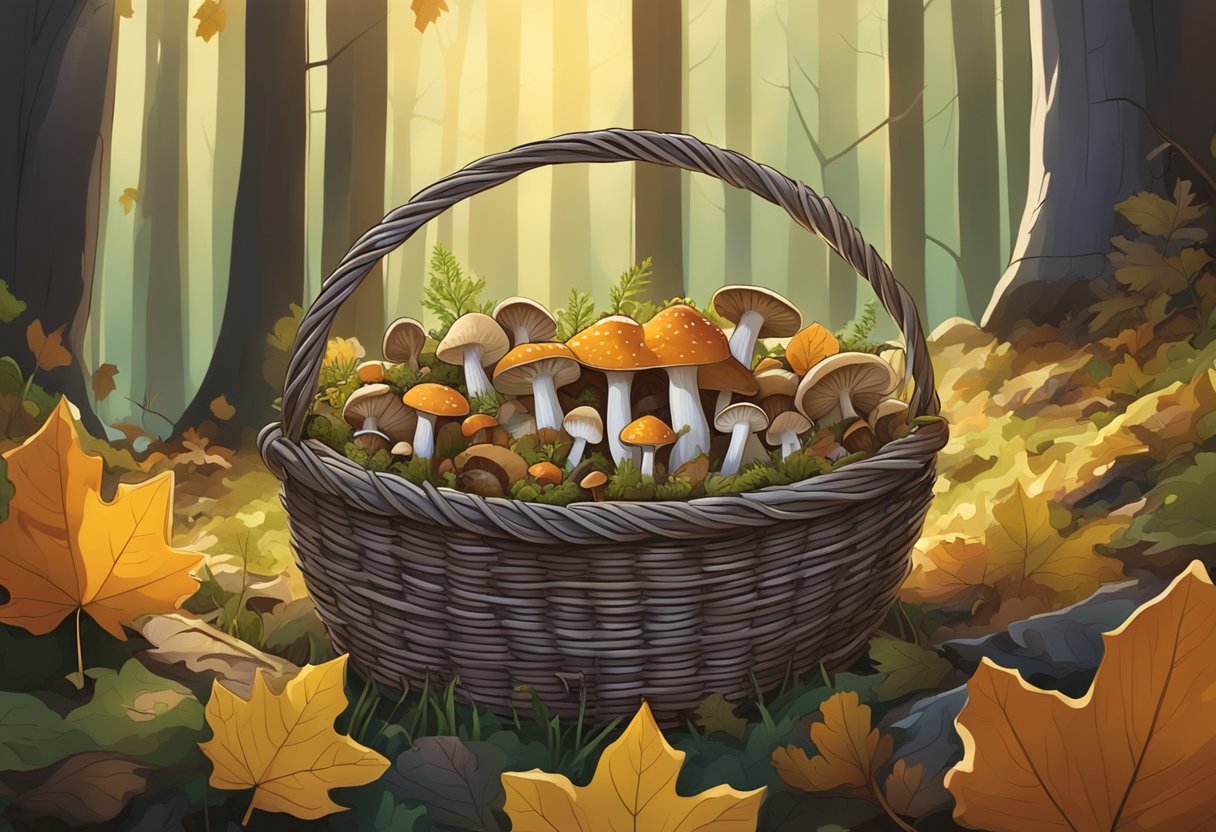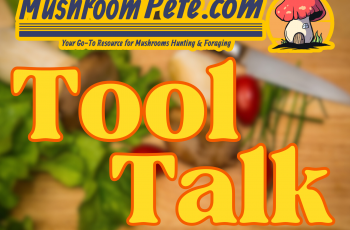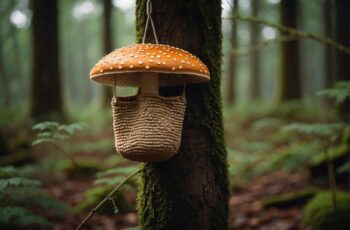Foraging is an activity that spans back to the very origins of human survival, involving the gathering of wild food resources from nature. As a bridge between our ancestral past and present-day culinary adventures, foraging necessitates the right equipment. Among these tools, the foraging basket stands out as iconic. These baskets are more than just containers; they are crafted to protect delicate flora from damage during collection and transport. Quality, therefore, becomes crucial—a sturdy basket not only endures the rigors of outdoor endeavors but also safeguards the collected bounty.

Selecting the proper foraging basket goes beyond mere aesthetics; it’s about functionality and sustainability. A well-chosen basket melds with the environment and supports ethical harvesting practices, ensuring that foragers leave behind a minimal footprint. As with any outdoor gear, practicality is paramount. A foraging basket must be lightweight yet durable, and versatile enough to handle a variety of terrains and weather conditions. The market offers an array of options, from traditional woven baskets to modern designs that incorporate features such as adjustable straps and additional compartments.
Key Takeaways
- Foraging baskets are critical tools that aid in the ethical and effective collection of wild food resources.
- The quality and functionality of a foraging basket are essential for protecting gathered items and ensuring sustainability.
- A well-selected basket balances the need for durability, versatility, and minimal environmental impact.
Understanding Foraging Baskets
Foraging baskets are more than just carrying containers; they embody a rich history and offer diverse options in materials and functionality tailored for efficient harvest and transport.
Historical Significance of Foraging Baskets
Foraging baskets have been integral to human societies for millennia, serving as essential tools for gathering food from the wild. Traditionally, these baskets were hand-woven with meticulous care, often reflecting the foraging culture of a region. They not only facilitated the collection of plants, fruits, and mushrooms but also stood as symbols of sustainability and the human connection to the environment.
Types of Foraging Baskets
When exploring types of foraging baskets, one encounters an array of designs each suitable for specific tasks:
- Wicker Baskets: Classic and breathable, ideal for delicate items like mushrooms.
- Canvas Bags: Known for their durability, canvas foraging bags often feature collapsible designs.
- Mesh Bags: These allow for spores to disperse, promoting mushroom propagation.
- Backpack Baskets: A type with straps, providing hands-free convenience.
Materials and Durability
The choice of material for a foraging basket impacts both its durability and functionality:
- Wicker: Light yet sturdy, and allows for air circulation.
- Canvas: Highly durable and often weather-resistant.
- Leather: Adds aesthetic appeal and longevity, seen in high-quality trims and fastenings.
- Mesh: Provides lightweight carrying capacity and prevents moisture buildup.
Selecting a foraging basket isn’t just about looking at the immediate usage but pondering over the long-term sustainability and how the basket will hold up over repeated use in different environmental conditions.
Essentials of Foraging Gear
Proper gear is integral for effective and safe foraging. The right tools ensure efficiency and help identify edible species.
The Forager’s Toolkit
Foragers must be equipped with a variety of tools to safely harvest wild edibles. The most important tool in a forager’s toolkit is a knife, which is indispensable for cutting stems and digging up roots. A sturdy knife should be sharp, comfortable to hold, and ideally have a sheath for safety. Besides the knife, having a field guide is critical for correctly identifying edible plants and mushrooms, preventing the risk of consuming poisonous species. Additionally, foragers often bring along a foraging bag or pouch to keep their hands free for picking and to store their finds securely. For larger items or a heftier haul, a backpack may be more appropriate.
Selecting the Right Basket for Different Forages
Baskets serve as the traditional container for many foragers due to their breathability, which is vital for the longevity of gathered items, particularly mushrooms. The type of basket needed can depend on the forage; a sturdy, open-weave bucket might be preferred for heavy items like nuts or apples, while a lighter, more accessible basket could be ideal for delicate leafy greens and herbs. When selecting a foraging basket, consider the size and ease of carrying; it should be spacious enough for your intended harvest but not cumbersome. The use of specialized mushroom hunting bags is also widespread, as these allow for the spores of the mushrooms to be released back into the environment to promote regrowth.
Practical Foraging Tips
When foraging for fruits, vegetables, berries, nuts, and other wild edibles, it’s imperative to optimize your approach for both efficiency and environmental stewardship. From packing with convenience in mind to foraging with a conservationist mindset, these tips ensure a responsible and rewarding experience.
Efficient Packing and Accessibility
Foragers should consider foraging bags with multiple pockets and compartments to sort and protect their finds. A well-designed foraging bag, like the Barebones Harvesting and Gathering Bag, offers both durability and comfort, which is crucial for those spending hours in diverse terrains. By using separate compartments, a forager can prevent delicate berries from being crushed by heavier nuts and ensure that each type of foraged item remains easily accessible. Furthermore, categorizing edibles as they are collected can aid in the identification process and maintain the integrity of the foraged goods.
Foraging with Care for the Environment
The practice of foraging should always include efforts to preserve the ecosystems where wild edibles are found. For instance, foragers must be cautious not to disrupt the mycelium network when harvesting mushrooms, as this can prevent future growth. Careful collection of fruits and berries should be exercised to avoid damaging the parent plant. Collecting spores or seeds to help regenerate the population of wild edibles is also a thoughtful practice.
While harvesting, use cloth bags to allow your finds to breathe, as suggested by Homespun Seasonal Living, rather than plastic, which can cause condensation and harm your foraged items. Promoting conservation extends beyond personal gain and aids in sustaining the natural bounty for future generations.
Purchasing and Customizing Your Foraging Basket

When embarking on a foraging journey, selecting the right container is crucial for convenience and efficiency. A well-chosen basket or bag can enhance the experience significantly, whether purchased ready-made or customized to specific needs.
Where to Buy Foraging Baskets
Foragers can find a range of baskets tailored to their needs, from sturdy, handcrafted designs to more modern foraging bags. Etsy stands out as a premier destination for those seeking both vintage and personalized foraging baskets, offering a variety of options that cater to different foraging activities. For instance, one may want a specialized mushroom foraging basket for delicate finds or a durable mesh mushroom bag for ventilation. It’s important to consider the material, size, and durability when choosing a foraging container to suit specific foraging endeavors.
- Handcrafted Baskets: Often made from natural materials like wicker or wood.
- Foraging Bags: Designed for comfort, these may include back straps for easier carrying.
Interested in a Gootium-branded bag or the AuSable basket style? Perform a simple search to find the ideal match tailored to foraging needs.
DIY Foraging Basket Ideas
For the creative individuals or those looking for unique gift ideas, crafting a DIY foraging basket can be both fulfilling and practical. Customizing baskets gives the liberty to design a container that perfectly suits one’s style and foraging requirements. Adding compartments for different types of forage or waterproofing the base are examples of useful customizations. Mesh additions, similar to what one would find in a mesh mushroom bag, allow for dirt and debris to fall away, keeping the forage clean.
To get started on a DIY project, consider these points:
- Personalization: Add personal touches, such as monograms or painted designs.
- Functionality: Modify or add straps for ease of carrying, or include a lining for the basket.
For those looking to gift a forager, personalized, handmade foraging gear from a marketplace like Etsy, or for well-researched recommendations for a mushroom foraging backpack, the web offers plentiful resources.
Frequently Asked Questions
When choosing a foraging basket, it is important to consider its durability, maintenance, design features, and suitability for the specific type of foraging activity you are engaged in.
What materials are best for crafting a durable foraging basket?
Materials such as wicker, canvas, and wire mesh are popular for crafting durable foraging baskets. Wicker is traditional and robust, whereas canvas is flexible and easy to carry, and wire mesh offers excellent ventilation for harvested goods.
How do you clean and maintain a mushroom foraging basket?
To clean and maintain a mushroom foraging basket, remove any debris after each use, and wash it with water and a mild soap, if necessary. Drying it out completely before storing to prevent mold and rot is crucial, and regular checks for any damage maintain its longevity and usefulness. For an in-depth understanding, reading about the maintenance of mushroom foraging gear can be beneficial.
Which features make a foraging basket convenient for long walks?
A foraging basket for long walks should be lightweight, have comfortable handles or straps, and enough capacity to carry what you gather. Some foragers might also appreciate an attached lid or flap to protect their finds.
Can you recommend some reliable wicker foraging backpack brands?
While I cannot recommend specific brands, look for ones that are highly rated by users, known for their craftsmanship, and provide a good balance between comfort and durability.
Are there any foraging baskets specifically designed for berry picking?
Foraging baskets designed for berry picking often feature wide openings and are shallow to prevent the crushing of delicate fruits. Some designs incorporate divisions or trays to separate berries and prevent bruising.
What should one consider when choosing a foraging basket with a strap?
When selecting a foraging basket with a strap, consider the adjustability of the strap for comfort, its width to distribute the load, and whether it is detachable for easy cleaning. The basket’s overall balance when carried should also be taken into account.


